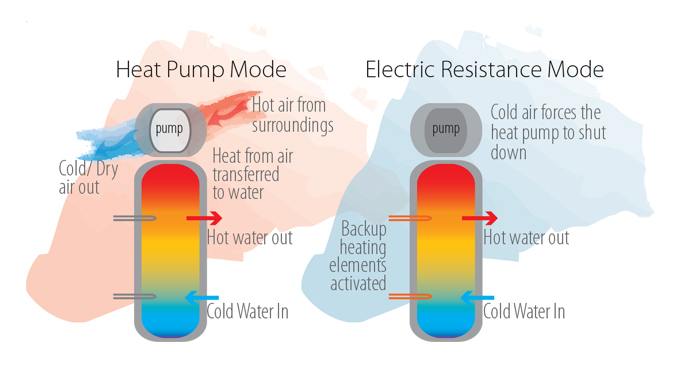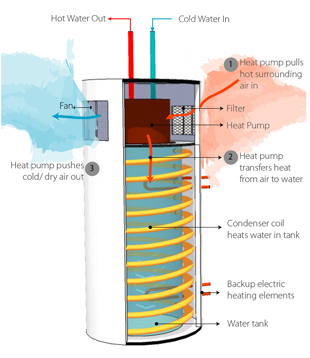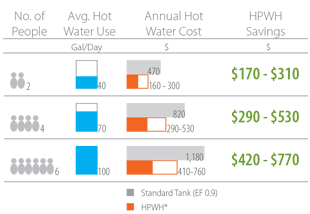What is a Heat Pump Water Heater?

A ‘heat pump’ is a device that moves heat from one place to another; it works much like an air conditioner or a refrigerator. While a refrigerator moves heat from your fridge to your kitchen, a heat pump water heater (HPWH) moves heat from your home into the hot water tank. Most HPWHs include an integrated hot water tank and a ‘hybrid’ mode (i.e. they can also run as standard electric water heaters if necessary).

Location
For the HPWH to run efficiently, the space should generally stay above 50°F.
Space
A heat pump removes heat from ambient air. Hence there must be a considerable volume of air available; most manufacturers recommend about 750 ft3 . HPWHs often require larger clearances from walls so that air can circulate properly, and they are often taller and heavier than standard water heaters.
Most closets – even closets with louvered doors – are not appropriate for HPWHs
Condensate Drain
Because HPWHs remove moisture from the air, the condensed water must be channeled to a drain or a condensate pump must be installed.

Noise
Make sure the HPWH is located where this noise will not be disruptive.
Maintenance
Maintenance requirements are not onerous, but they are important. Many HPWHs have air filters which should be cleaned regularly for best performance. Refer to product manuals for more information.
Savings depend primarily on hot water use.

There will always be overall savings when compared to a standard electric water heater. Even if the HPWH runs in electric resistance mode all winter, during the warmer months you will benefit from the increased efficiency (along with some free cooling and dehumidification).
When Does it Work Best
HPWHs are more efficient when the surrounding air is warmer. Intense water use may result in lower efficiencies.

